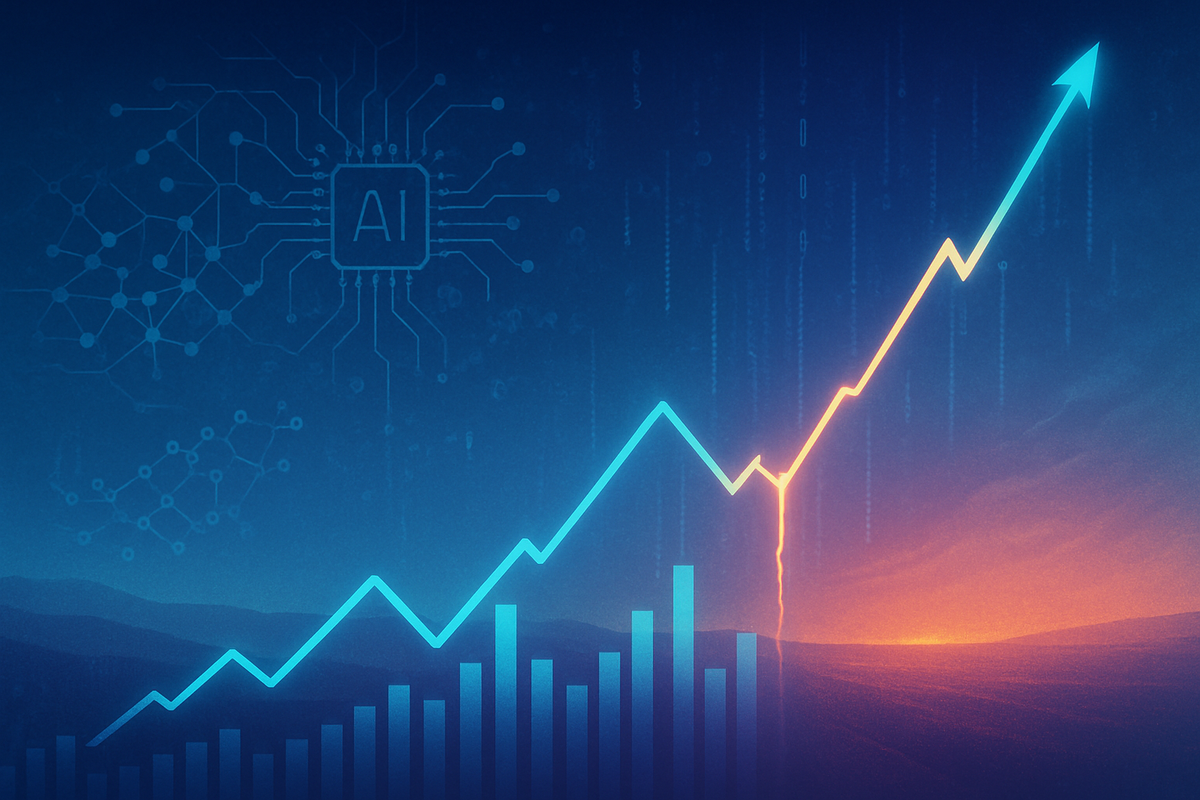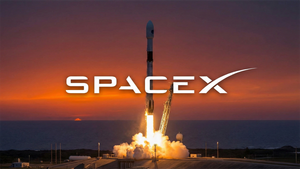
The financial markets are currently experiencing a significant surge in tech stocks, propelled by an unprecedented boom in artificial intelligence. As of October 2025, valuations for many AI-related companies have reached historic highs, with a handful of dominant tech giants driving a substantial portion of global market gains. This fervent optimism, fueled by projections of explosive AI market growth and massive capital expenditures, has investors questioning the sustainability of the current rally.
While the AI revolution promises transformative economic benefits, contributing significantly to global GDP growth and corporate innovation, the rapid ascent of tech valuations has ignited widespread debate. Experts and financial institutions are increasingly drawing parallels to historical speculative bubbles, raising concerns that the market's enthusiasm might be outpacing fundamental realities. The critical question facing investors and the broader economy is whether this remarkable climb represents a new era of technological prosperity or a precarious ascent towards a significant market correction.
The AI-Driven Market Ascent: A Detailed Look
The current tech stock rally, particularly pronounced in the AI sector, has been a defining feature of the market landscape leading up to October 2025. The S&P 500 Information Technology Sector's estimated Price-to-Earnings (P/E) Ratio stands at a staggering 39.49, dwarfing its historical averages and signaling a market confident in future growth. This confidence is rooted in the explosive growth of the global AI market, projected to expand by 38% in 2025 alone, reaching an estimated US$243.72 billion, with some estimates even higher. This growth is not merely speculative; it is backed by massive capital expenditure, with AI infrastructure investments expected to surge by 67% year-over-year in 2025 to USD 375 billion.
The timeline of this AI boom began in earnest with the widespread adoption and advancements in generative AI, particularly over the past two years. Companies like Nvidia (NASDAQ: NVDA), Microsoft (NASDAQ: MSFT), Apple (NASDAQ: AAPL), Alphabet (NASDAQ: GOOGL), Amazon (NASDAQ: AMZN), Meta Platforms (NASDAQ: META), and Tesla (NASDAQ: TSLA), collectively known as the "Magnificent Seven," have been at the forefront, dominating global markets. These key players have committed tens of billions to AI-enabled data centers and research, pushing the boundaries of what AI can achieve, from advanced language models to autonomous systems.
Initial market reactions have been overwhelmingly positive, with significant inflows into AI-focused funds and a general bullish sentiment driving up stock prices across the tech sector. The AI boom is estimated to account for approximately a third of US GDP growth and has contributed to 80% of the gains in US stocks in 2025. However, beneath the surface of soaring valuations, a palpable sense of anxiety is emerging. Institutions like the Bank of England and the IMF have issued warnings, suggesting the AI boom could be a speculative bubble. A Bank of America poll in early October 2025 revealed that 54% of global fund managers believe AI stocks are in a bubble, identifying it as the foremost "tail risk." This dichotomy of exuberant growth and underlying caution defines the current market mood.
Companies at the Crossroads: Winners and Potential Losers
The AI boom has created a clear hierarchy of winners, primarily the technology behemoths that have invested heavily in AI research, development, and infrastructure. Nvidia (NASDAQ: NVDA) stands out as a colossal beneficiary, with its GPUs being the backbone of AI computation. Its stock performance has been astronomical, reflecting its indispensable role in the AI ecosystem. Similarly, cloud providers like Microsoft (NASDAQ: MSFT) with Azure, and Amazon (NASDAQ: AMZN) with AWS, are reaping immense benefits from companies needing vast computing power for AI models. Their substantial investments in AI-enabled data centers are translating directly into increased revenue and market dominance.
Other significant winners include companies leveraging AI to enhance their core offerings or develop new, innovative solutions. Palantir Technologies (NYSE: PLTR), Atlassian (NASDAQ: TEAM), and ServiceNow (NYSE: NOW) are highlighted for their high growth potential, integrating AI and data streaming into their enterprise software. These companies are transforming industries by making AI accessible and actionable for businesses. The "wealth effect" generated by the rising stock prices of these tech giants has also fueled consumer spending by wealthier households, indirectly benefiting broader economic sectors.
However, the concentration of market gains in these few dominant players also creates vulnerabilities. Smaller tech companies that struggle to keep pace with the rapid innovation and massive capital requirements of AI development could be marginalized or acquired. Furthermore, if the AI boom proves to be a bubble, the companies with the highest valuations and the most aggressive growth expectations stand to lose the most. Research from MIT indicating that 95% of organizations are currently getting zero return from their generative AI investments feeds concerns that some AI ventures may not translate into sustainable profits, potentially leading to sharp corrections for overvalued stocks. Companies heavily reliant on AI for their future growth, but without a clear path to profitability from these investments, could face significant headwinds.
Wider Significance: A New Paradigm or a Familiar Cycle?
The current AI-driven tech stock surge fits into a broader historical pattern of technological revolutions driving market exuberance, but with unique characteristics that warrant close examination. This event is not merely a sector-specific trend; it represents a fundamental shift in how industries operate, with AI permeating sectors from healthcare and finance to logistics and retail. The rapid adoption rate, with 83% of companies prioritizing AI in their business plans, underscores its transformative potential, suggesting a paradigm shift rather than just another tech cycle.
However, the intense market concentration, with the "Magnificent Seven" comprising an unprecedented share of global indices, raises concerns about systemic risk. This level of market dominance by a few firms echoes the dot-com bubble, where a handful of internet companies commanded disproportionate valuations before a dramatic correction. A potential slowdown or burst in the AI bubble could trigger significant ripple effects, impacting not only direct competitors and partners but also broader economic stability. Business investment would falter, and consumption could be hit by a reversal of the wealth effect.
Regulatory and policy implications are also emerging. Governments worldwide are grappling with how to regulate AI, addressing concerns around ethics, data privacy, market manipulation, and the immense energy consumption of AI data centers. Geopolitical tensions, particularly between the US and China, could further disrupt semiconductor supply chains, inflating costs and slowing AI development, thereby impacting valuations. The increasing capital intensity required for AI infrastructure, reminiscent of past overcapacity risks, also raises questions about the long-term return on this massive investment. The challenge lies in balancing innovation with prudent risk management and equitable growth.
What Comes Next: Navigating the Future of AI
Looking ahead, the trajectory of the AI boom presents a spectrum of short-term and long-term possibilities. In the short term, market volatility is likely to remain elevated, as investors weigh the immense potential of AI against the risks of overvaluation. A surge in the Cboe Volatility Index (VIX) in October 2025 already reflects this heightened market anxiety. Companies will need to demonstrate tangible returns on their AI investments to justify current valuations, moving beyond mere promises of future growth. This could lead to strategic pivots, with a greater emphasis on profitable AI applications and cost-efficient infrastructure development.
In the long term, the AI revolution is poised to continue reshaping industries, regardless of near-term market corrections. The emergence of "Agentic AI," involving autonomous AI systems, is a significant trend, with Deloitte predicting 25% of enterprises using generative AI will deploy AI agents in 2025. Edge AI and AI-enabled devices will also gain traction, pushing AI capabilities closer to the user. Market opportunities will emerge for companies that can effectively integrate AI into their products and services, creating efficiencies and new revenue streams. However, challenges such as material bottlenecks (power, data, commodities) and the need for skilled AI talent will persist.
Potential scenarios range from a "soft landing," where AI growth moderates but remains robust, allowing valuations to gradually align with fundamentals, to a more severe "hard landing" or bubble burst. A hard landing, as warned by experts like Paul Krugman, could lead to an economic slump worse than the dot-com bust, given AI's current contribution to GDP growth. Investors should prepare for increased scrutiny of AI project profitability, a potential shakeout of less viable AI ventures, and a shift towards companies with proven AI integration and sustainable business models. The coming months will be crucial in determining which path the AI-driven market will take.
Comprehensive Wrap-up: Assessing the AI Horizon
The current financial landscape, characterized by soaring tech stocks driven by the AI boom, presents a complex picture of immense opportunity intertwined with significant risk. Key takeaways include the unprecedented market concentration in a few AI-centric giants, the staggering capital flowing into AI infrastructure, and the widespread debate among experts regarding a potential speculative bubble. While AI's transformative power is undeniable, contributing substantially to economic growth and innovation, the sustainability of current valuations remains the central question.
Moving forward, the market will likely differentiate between companies with genuine, profitable AI applications and those whose valuations are built on speculative hype. Investors should anticipate continued volatility and increased scrutiny of AI investment returns. The coming months will be critical in observing how companies adapt their AI strategies, whether regulatory frameworks begin to solidify, and if the global economy can absorb a potential market correction without severe repercussions.
Ultimately, the AI revolution is a powerful force that will continue to reshape our world. However, its integration into the financial markets is still in its early, perhaps exuberant, stages. Investors should prioritize companies with strong fundamentals, clear AI strategies, and a demonstrated ability to generate tangible value from their AI initiatives, while maintaining a cautious eye on broader market sentiment and macroeconomic indicators.
This content is intended for informational purposes only and is not financial advice






